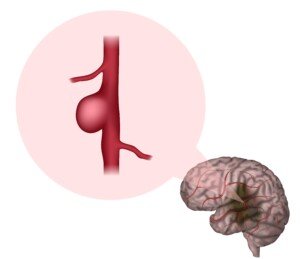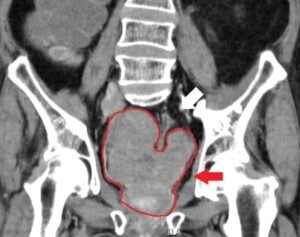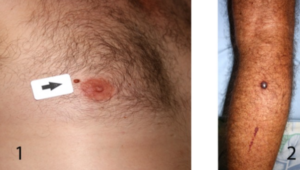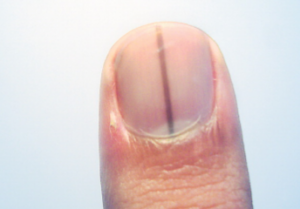
“Brain aneurysms can occasionally cause one-sided headaches,” says Farhan Siddiq, MD, a neurosurgeon with University of Missouri Health Care.
“These are large aneurysms, a compression surrounding structures that may cause pain behind the eye or one-sided headaches,” adds Dr. Siddiq.
However, a sudden pain behind the eye or a headache on one side is more likely to be caused by something other than an aneurysm.
Just what is an aneurysm?
It is a bulging or dilated section of a blood vessel in the brain. A major risk factor is high blood pressure that has gone untreated for a very long time.

Bulge in a blood vessel. Shutterstock/Veronika Zakharova
Sometimes there is no known cause for these dilated portions of blood vessels, and they are also sometimes discovered incidentally during autopsies on people who died from an unrelated cause.
They are also often discovered by accident via brain imaging for an unrelated reason.
For instance, a person may have an image of their brain taken following a motor vehicle accident.
You should make a documentation of your headaches or sudden head pains to see if there’s a pattern.
It may be some time before a pattern becomes evident, so be persistant in your documentation.
For example, you may notice that a sudden sharp pain or “ding” in your head almost always occurs only on the day after your shoulder workouts at the gym.
This could be a muscle spasming in your shoulder or neck area, radiating pain into what seems like inside the head, when in actuality it’s radiating to the muscles of the scalp.
Can a ruptured aneurysm cause a headache on one side?
“In case of rupture, most often the headache is holocranial, ” says Dr. Siddiq.
Holocranial means globally or the entire head.
This is why if you ever experience a very focal sudden sharp or stabbing pain in your head, chances are exceedingly high that this is NOT a rupturing aneurysm.
The more time that passes after a sudden head “ding” without any additional worrisome symptoms, the more reassured you can be that you don’t have anything serious going on in your brain.
This is why keeping a written documentation is so valuable.

Dr. Siddiq is fellowship-trained in endovascular surgical neuroradiology and vascular neurology from the University of Minnesota Medical Center. His areas of special focus also include brain aneurysms and carotid disease.
 Lorra Garrick has been covering medical, fitness and cybersecurity topics for many years, having written thousands of articles for print magazines and websites, including as a ghostwriter. She’s also a former ACE-certified personal trainer.
Lorra Garrick has been covering medical, fitness and cybersecurity topics for many years, having written thousands of articles for print magazines and websites, including as a ghostwriter. She’s also a former ACE-certified personal trainer.
.









































